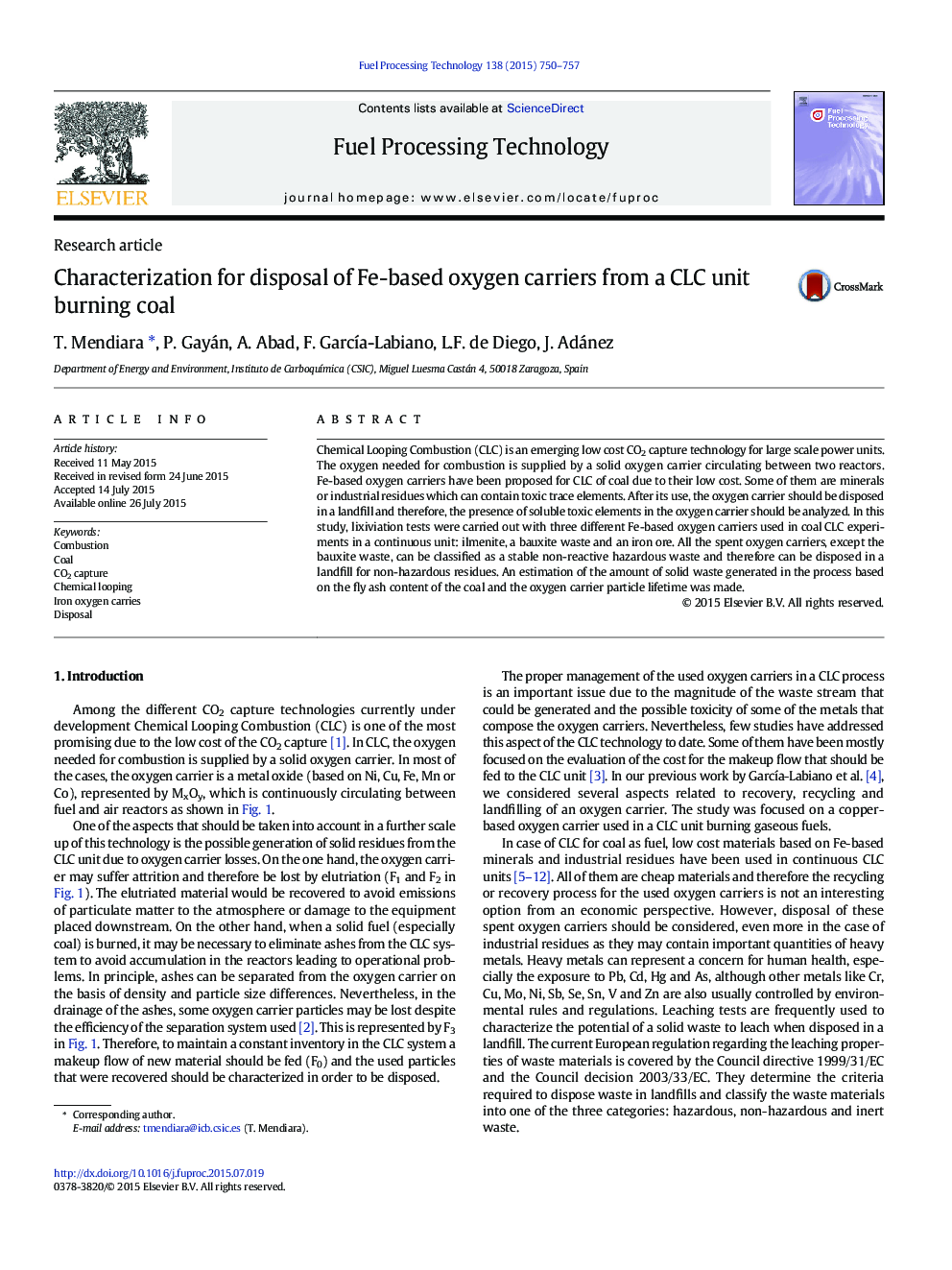| Article ID | Journal | Published Year | Pages | File Type |
|---|---|---|---|---|
| 6656971 | Fuel Processing Technology | 2015 | 8 Pages |
Abstract
Chemical Looping Combustion (CLC) is an emerging low cost CO2 capture technology for large scale power units. The oxygen needed for combustion is supplied by a solid oxygen carrier circulating between two reactors. Fe-based oxygen carriers have been proposed for CLC of coal due to their low cost. Some of them are minerals or industrial residues which can contain toxic trace elements. After its use, the oxygen carrier should be disposed in a landfill and therefore, the presence of soluble toxic elements in the oxygen carrier should be analyzed. In this study, lixiviation tests were carried out with three different Fe-based oxygen carriers used in coal CLC experiments in a continuous unit: ilmenite, a bauxite waste and an iron ore. All the spent oxygen carriers, except the bauxite waste, can be classified as a stable non-reactive hazardous waste and therefore can be disposed in a landfill for non-hazardous residues. An estimation of the amount of solid waste generated in the process based on the fly ash content of the coal and the oxygen carrier particle lifetime was made.
Related Topics
Physical Sciences and Engineering
Chemical Engineering
Chemical Engineering (General)
Authors
T. Mendiara, P. Gayán, A. Abad, F. GarcÃa-Labiano, L.F. de Diego, J. Adánez,
